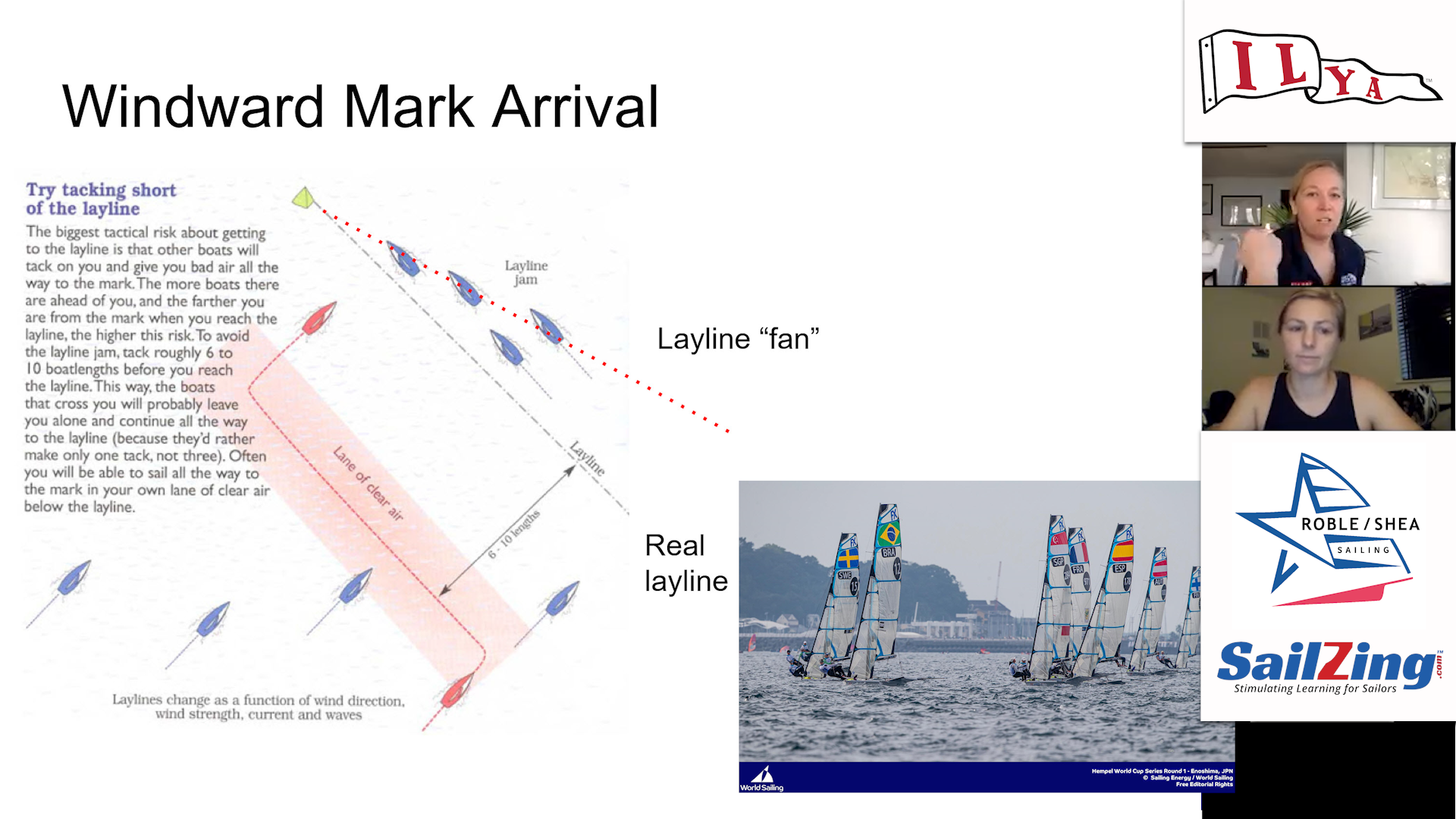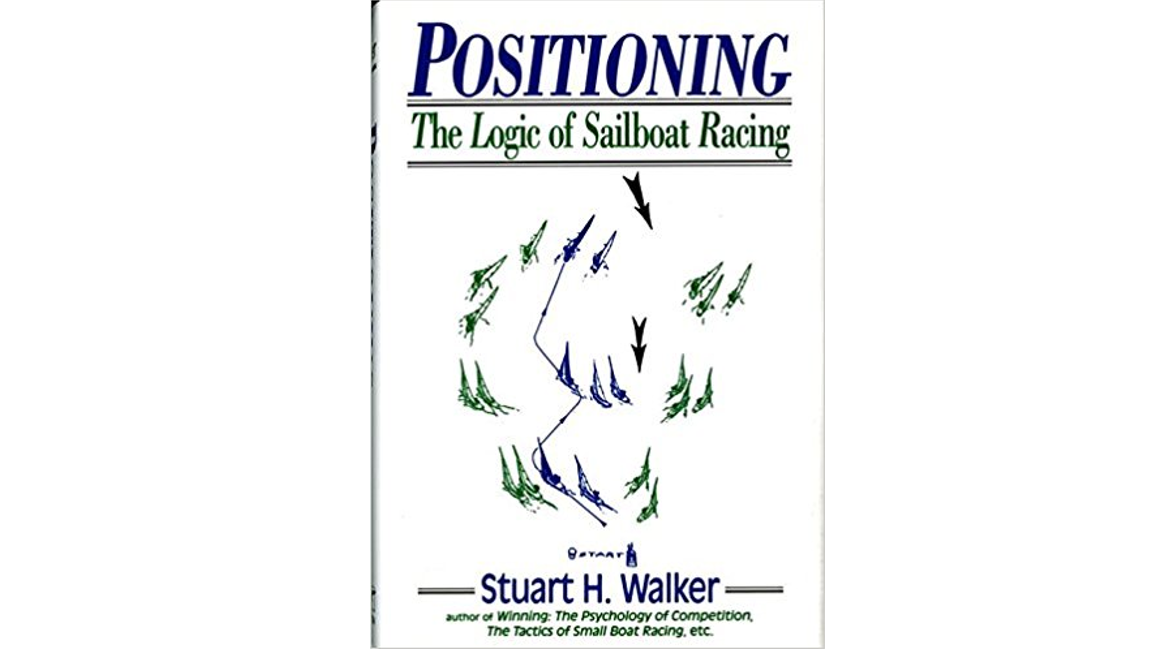How good are your upwind tactics? Do you have a thought process to help make the right decisions? How well do you deal with trouble spots, such as approaching a pack of boats, or setting up for the windward mark? Have you tried tactical moding? Here’s a chance to peek into the minds of Olympic qualifiers Stephanie Roble and Maggie Shea. As part of the Fast Forward series, Steph and Maggie share many tactical insights that go beyond the advice most of us have learned.
The ILYA Fast Forward series is a partnership between the ILYA, Roble/Shea Sailing, and SailZing, LLC. The videos are edited recordings of live webinars conducted in spring 2020. Watch the full video, or use the timings in the video description to go directly to the topics that interest you. Or, read a summary of the key insights below.
Upwind Tactics – Outline and Video Timings
- Developing your game plan – Dave Ullman chart (00:02:20)
- Tactical intelligence – from John Bertrand (00:03:14)
- Make predictions and test them
- The ongoing narrative
- Rules of thumb (00:06:44)
- Assessments (00:08:13)
- Ladder rungs – know who you are racing (00:08:13)
- Gains in headers and lifts (00:13:06)
- Boat speed assessment questions (00:16:33)
- Visualizing gains and losses
- Walking through a race
- Where to start in a pack (00:22:06)
- Bail out options (00:24:12)
- Lane management (00:31:18)
- Three upwind modes (00:35:15)
- Tactical moding (00:38:39)
- Leverage and consolidation (00:43:07)
- Covering and the coverage zone (00:46:36)
- Cross, tack, or duck? (00:51:17)
- Q & A (00:59:13)
- Where to tack on a pack – leading back and edging out (01:08:36)
- Left and right corner plays near the layline – Tim Wadlow’s ratings (01:12:25)
- Using a blocker (01:19:10)
- Q & A (01:21:48)
- Layline dangers (01:25:32)
- Windward mark arrival (01:26:52)
- Layline Games (01:28:21)
- Upwind rules
- Five refresher scenarios – crossing, tacking ahead, mark room (01:30:19)
- Tactical applications of the windward mark rules (01:50:29)
Key Insights
Know who you are racing
Often, we only pay attention to the boats closest to us. Steph and Maggie point out that you need to assess your position against the whole fleet. Boats on the other side of the course may be gaining while you’re focused on the boats nearby.
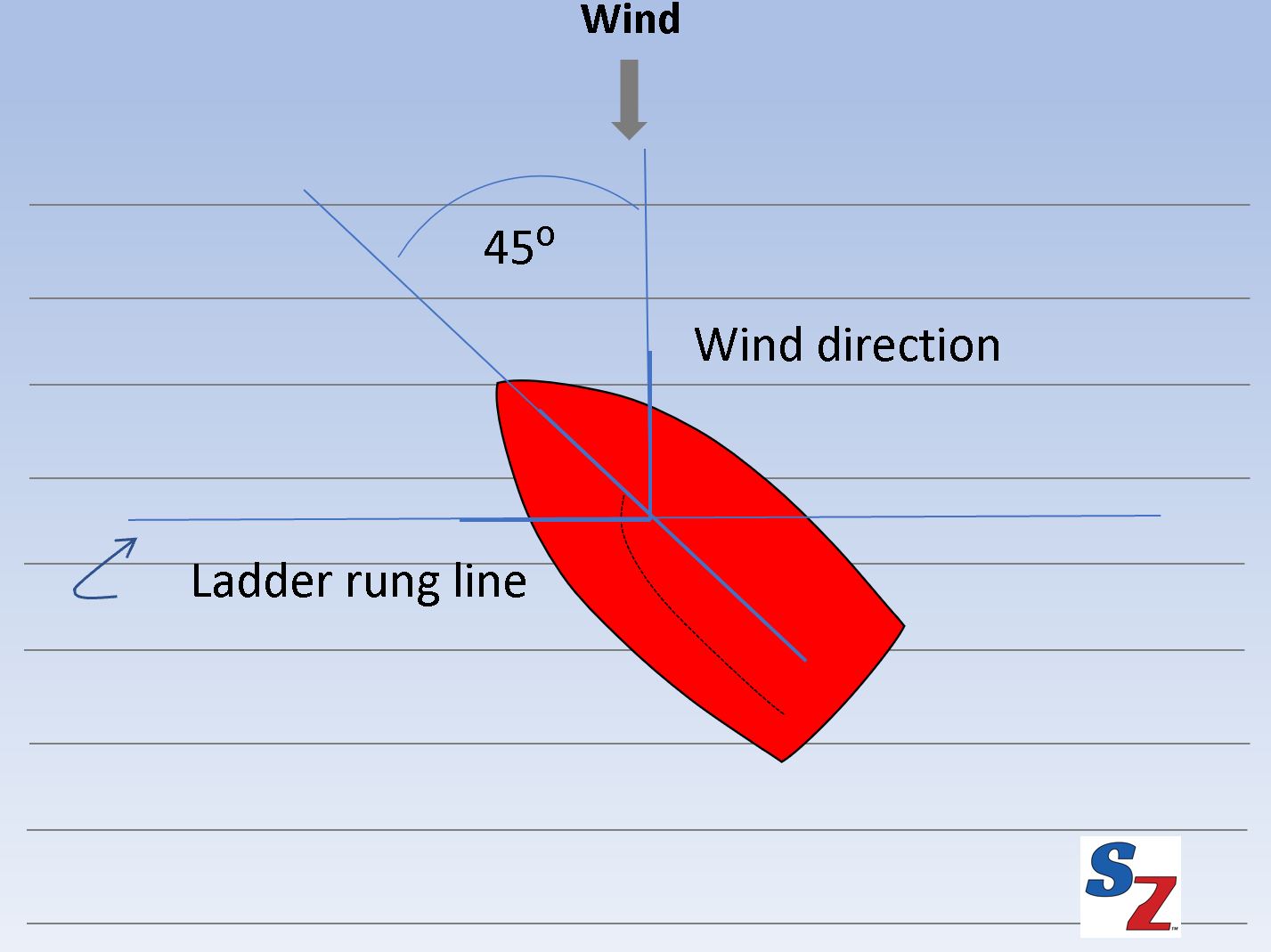
They show a simple technique using ladder rungs to visualize your position. Imagine a line 45 degrees to your centerline extending ahead and to leeward and behind to windward. This is your ladder rung line. You are ahead of boats if they’re behind this line. Find out who is on or near your ladder rung and pay attention to gains and losses against these boats.
Tactical moding
Tactical moding manages the separation (leverage) between you and other boats. The rule of thumb is “foot in a lift and pinch in a header.” This tactical play assumes the wind is oscillating. Here’s how it works:
- Footing in a lift gets you sailing fast toward the next shift. Footing increases your separation from boats to windward to maximize your gain from the next shift.
- Pinching in a header keeps you closer to the boats to windward. If you must keep sailing in a header, this minimizes the other boat’s leverage when the wind shifts back the other way.
This technique is also called “wallying.” We’ll describe other benefits of wallying in a future article.
Where to tack on a pack – lead back or edge out?
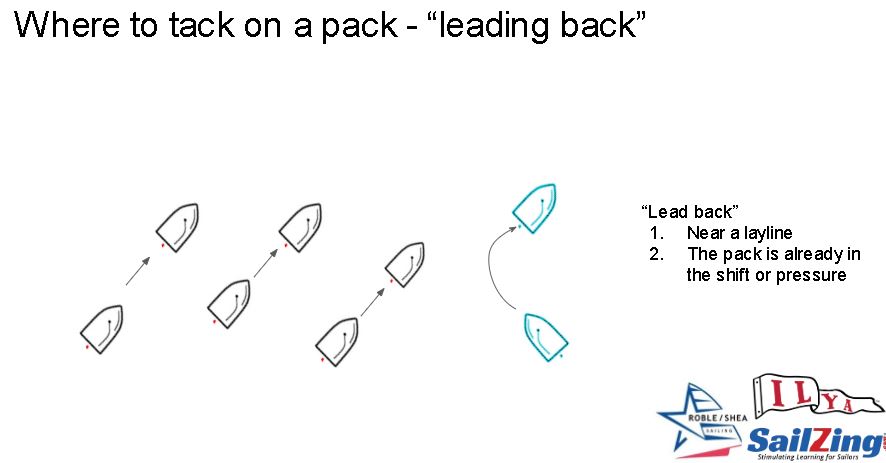
Assume you’re on one side of the race course, sailing toward an edge. What’s your play if you’re approaching a pack of boats sailing toward the center of the course on the opposite tack? Do you tack and lead them back? Or, do you cross and “edge out” on them? Here are some questions to ask:
- Is the pack already in the next shift or more pressure? If so, lead back toward the next shift. Otherwise, consider edging out to get to the advantage that they missed. However, if the puffs and shifts are rapid, edging out may not work.
- How close are you to the layline? If you’re than 80% of the way there, consider leading back.
- Can you cross the pack and tack in a position to keep them in your coverage zone? If so, this is a good play to control the pack, especially when you’re near the top of the course. If not, consider leading back. For more about coverage zones, see the video or Keeping Your Lead, Part 2: Covering Tactics on the Beat.
Layline corner plays and windward mark arrival
Where do you make your final tack onto the layline for the windward mark? Using GPS tracks, Steph and Maggie showed how you can lose places by making the wrong decision. They use a rating system from Tim Wadlow to rank layline plays as follows:
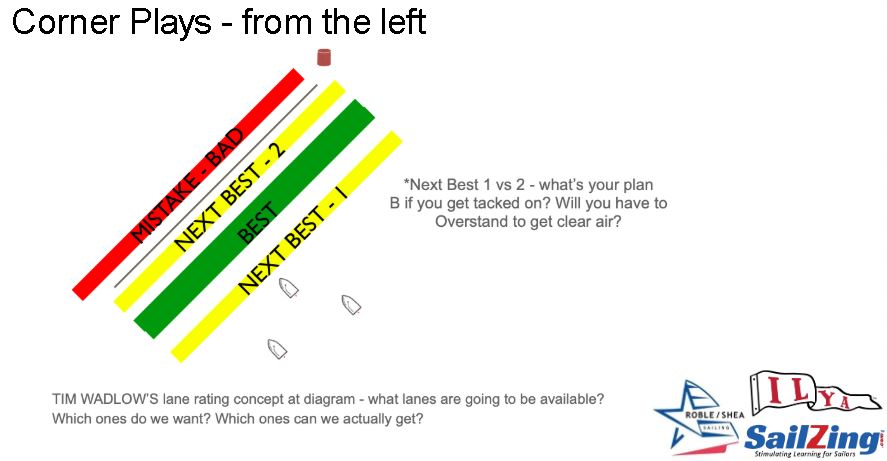
- Far from the mark
- If you’re far from the mark, tack away from the layline before you are 80% of the way to it. It’s too hard to call the layline from this far out, and you need to minimize your chance of overstanding.
- Closer to the mark
- Best
- From the left of the mark, tack to port four boat lengths short of the port layline. This leaves you room to tack back if needed to clear your air. It also lines you up for getting to the starboard layline outside the three-boat-length zone.
- From the right, tack to starboard on the layline.
- Next best
- From the left of the mark, tack either on the layline or 5+ boat lengths short. Again, tacking short leaves you room to tack back to avoid bad air from other boats tacking on you.
- From the right, tack a few boat lengths short if you still have some distance to go to the mark. Tacking on the layline is OK if there’s minimal traffic and little chance of a shift.
- Worst
- Sail past the layline. Unless you are close to the mark and have a good reason, overstanding makes you sail extra distance. Also, if the wind shifts in either direction, you will lose ground to other boats below you.
- Best
More Information
Want more information about upwind tactics? Here are some links to SailZing.com articles:
Ladder Rungs: Understand the Race Course with a Visual Approach
Velocity Made Good (VMG) – Definition and Application
Keeping Your Lead, Part 2: Covering Tactics on the Beat
Upwind Strategy and Tactics – Sail in Clear Air
Roble/Shea Sailing
Keep up with Steph and Maggie’s campaign and consider donating.
ILYA foundation – donate here or directly at Roble-Shea website

